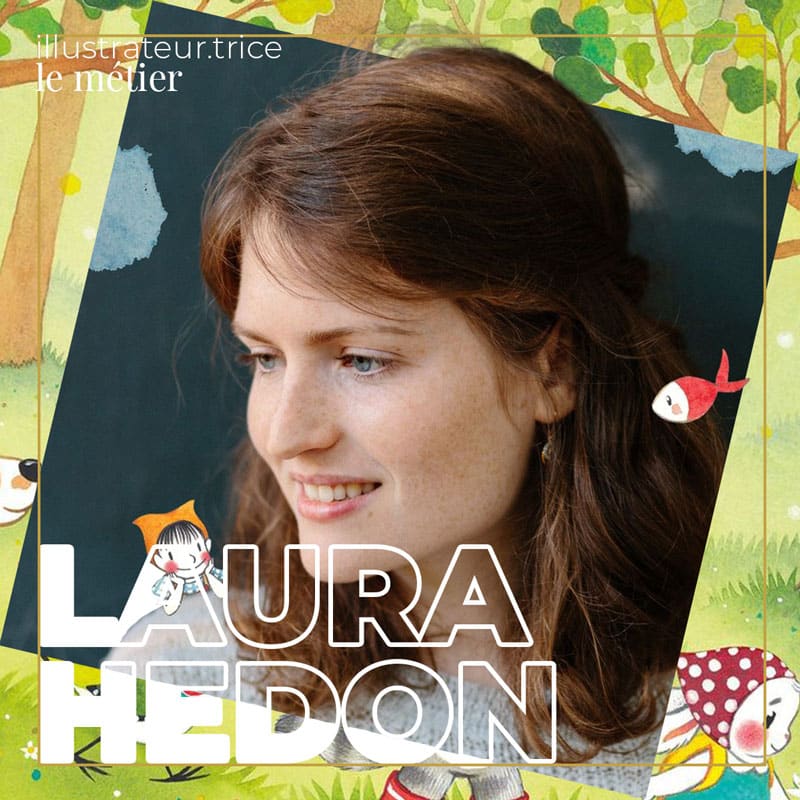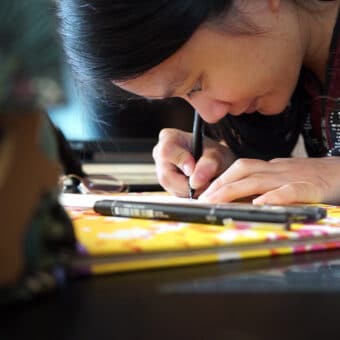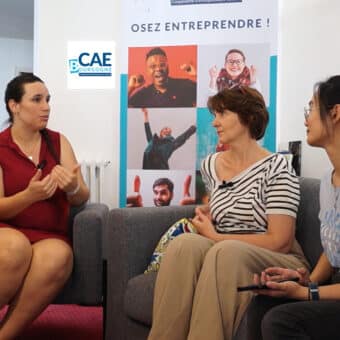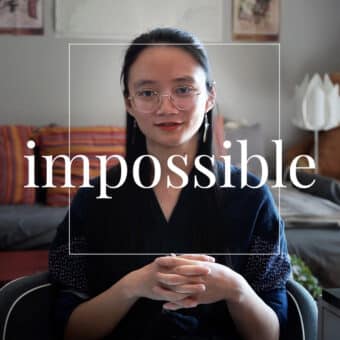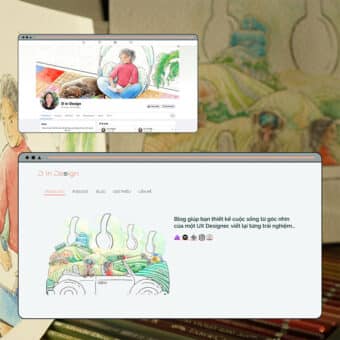Edited by my beloved friend K.L
This article is part of the special series “Illustrator: the profession“, where you will find the answers to the questions you most frequently ask me about my profession.
For this special occasion, I invited some talented colleagues to bring us their realistic, detailed, and sincere points of view on the profession of illustrator.
Laura Hedon, illustrator, author, and children’s storyteller
When I had the idea for this special series, Laura was the first person who came to my mind.
As strange as it may sound, the interview with Laura is the first time I had an in-depth conversation with a colleague about our profession.
Laura is a French author-illustrator. She has a talent for creating imaginary worlds filled with sweetness and color. Since 2017, she released ten illustrated albums in collaboration with children’s publishers. Her books address themes related to the environment, the ecology, the relationship between humans and nature…
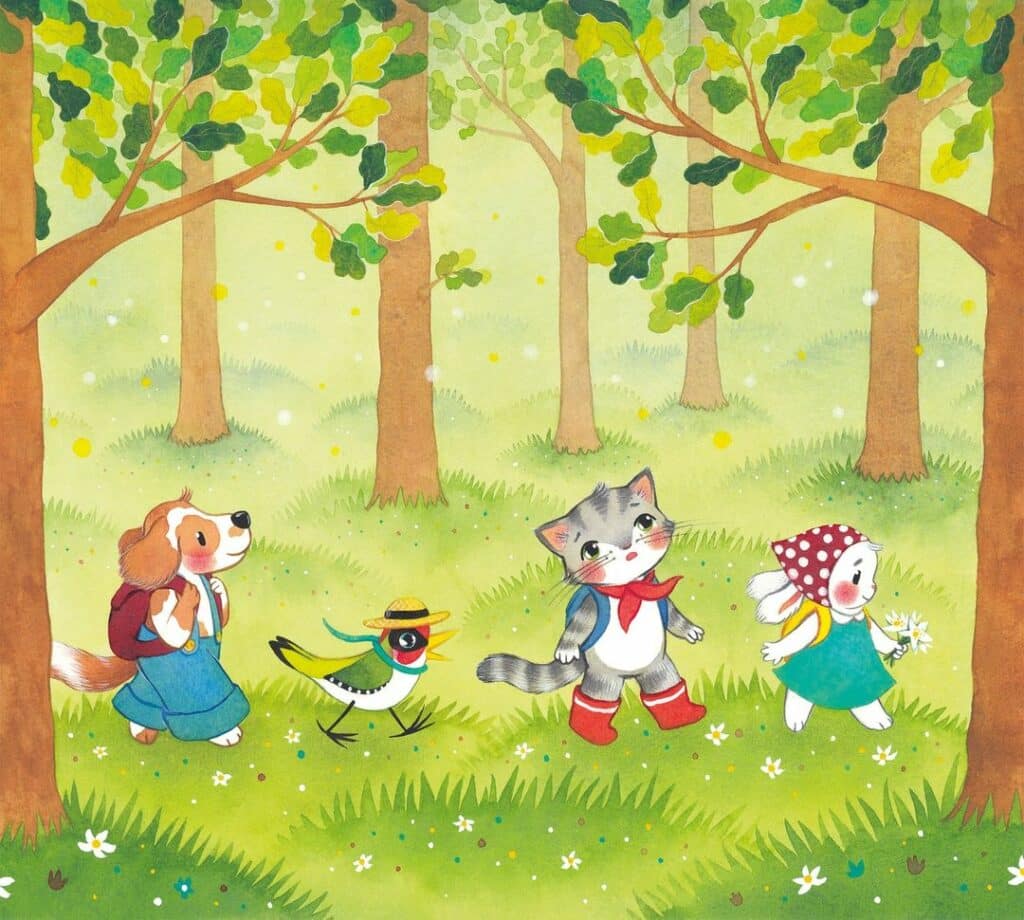
Laura’s ability to speak about these subjects with knowledge and sensitivity partly comes from her engineering studies in the field of biology.
So, have you noticed the reason why I absolutely wanted to interview Laura for this special series “Illustrator: the profession“?
The similarity in our backgrounds (branching out into the world of illustration after graduating from engineering school) and the fact that we often message each other on Instagrams unlocked my voice. I had the same enthusiasm as when I used to attend Annual Railway Safety Committees at my former job, when I would (finally) meet the people who were experiencing the same happiness and going through the same struggles as me.
This article contains all of Laura’s detailed answers to your questions. It is also filled with my sharing and my point of view on several subjects.
Meet the artist
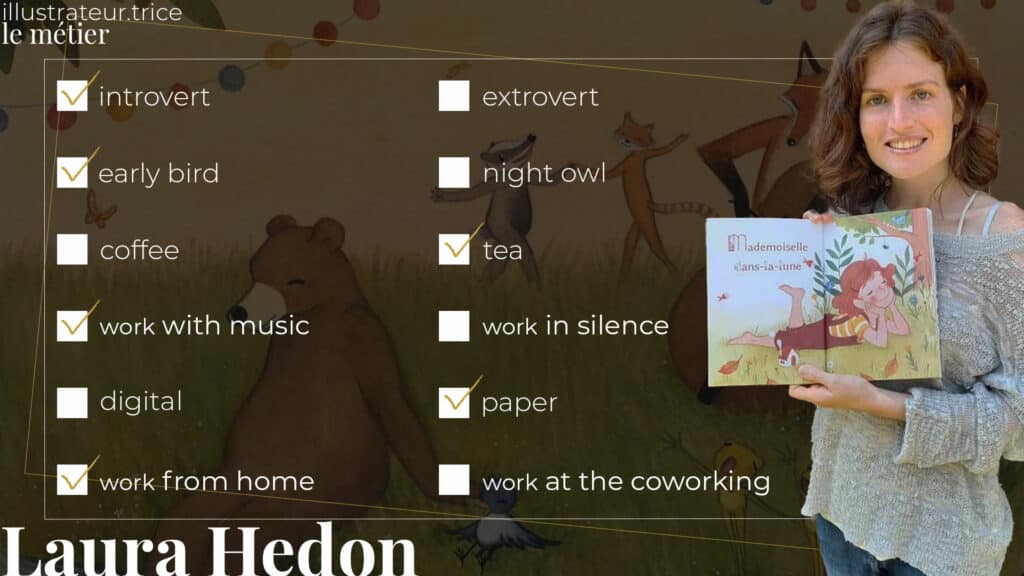
The illustrator = the artist + the entrepreneur
Passion: the primary reason
Tu Ha An (An): When people talk about our profession, I often hear about the cliché of artists being locked up in their studio and cut off from everyone to just daydream all day… How would you describe your activity as an illustrator?
Laura Hehon (Laura): Sometimes people would say to me: “How do you create without being drunk or without being on drugs?” That’s nonsense!
I would say that being an illustrator is first and foremost a job of passion. We invest a lot. We are constantly thinking about how to improve.
After that, it is a very independent and sometimes solitary job. It will be difficult if you do not like to make decisions yourself.
And finally, it’s a multi-faceted job. The job of illustrator includes, obviously, drawing, but also digital management (for example: digitization of images), communication, administrative tasks, accounting…
And since it is difficult to live off only one activity, it is important to combine it with other related activities, for example courses to animate, or a store to run.
An: What led you to choose this passionate profession?
Laura: Ever since I was a little girl, I have always loved everything that has to do with narrative images. I realized quite late that this was what I wanted to do.
Like you, I did studies that had nothing much to do with drawing. And I did not feel good. I was missing that creative part, and the freedom, that we find in our job.
So I started to work on it. And since then I cannot see myself doing anything else.
Courage and luck
An: People often say that changing paths is a brave choice. Do you think that you were brave?
Laura: I must say that I was lucky: I received some financial helps and I had the moral support of my family for my beginnings. Without the financial support, one might end up doing a “day job” for living. And it can be very difficult to juggle between several jobs.
After that, the courageous side of it is true. Morally, you always have to keep your hope up and persevere, even when everything goes wrong. But I was very lucky…
And you, how did you make the transition?
An: My family in Vietnam was against my choice to follow this path of being an artist (because of worries and lack of information). So I studied and worked in engineering, until I realized that drawing was really the only thing I wanted to do.
Laura: Just like you said, my family was also a bit reluctant as well. They told me that I could never live off it. It is quite difficult to go against these ideas…
An: For this reason, when I decided to start my own business, I started to build a circle of close friends outside of my family to give me emotional support. These people believe in me, even when I have doubts. I am extremely grateful.
Since I was able to have a contractual break with my former job, I had the insurance rights for unemployment. I also consider myself lucky, because I know that the benefits and the help for starting a business do not exist in all countries. I was well supported.
Laura: It is true that in France, we are lucky to have support to test and try to build a profession based on what we enjoy in life.
A multi-faceted job = A flexible and disciplined organization
An: You said that the illustrator is a multi-faceted job. How much time do you spend per week on each role/activity?
Laura: Overall, it is divided between drawing, administrative tasks, and communication on the social networks. However, I do not have a fixed schedule.
There are weeks when I will draw a lot, especially at the beginning of the project, when I have to do research and make sketches. And then there are weeks around the end of the project that I just digitalize.
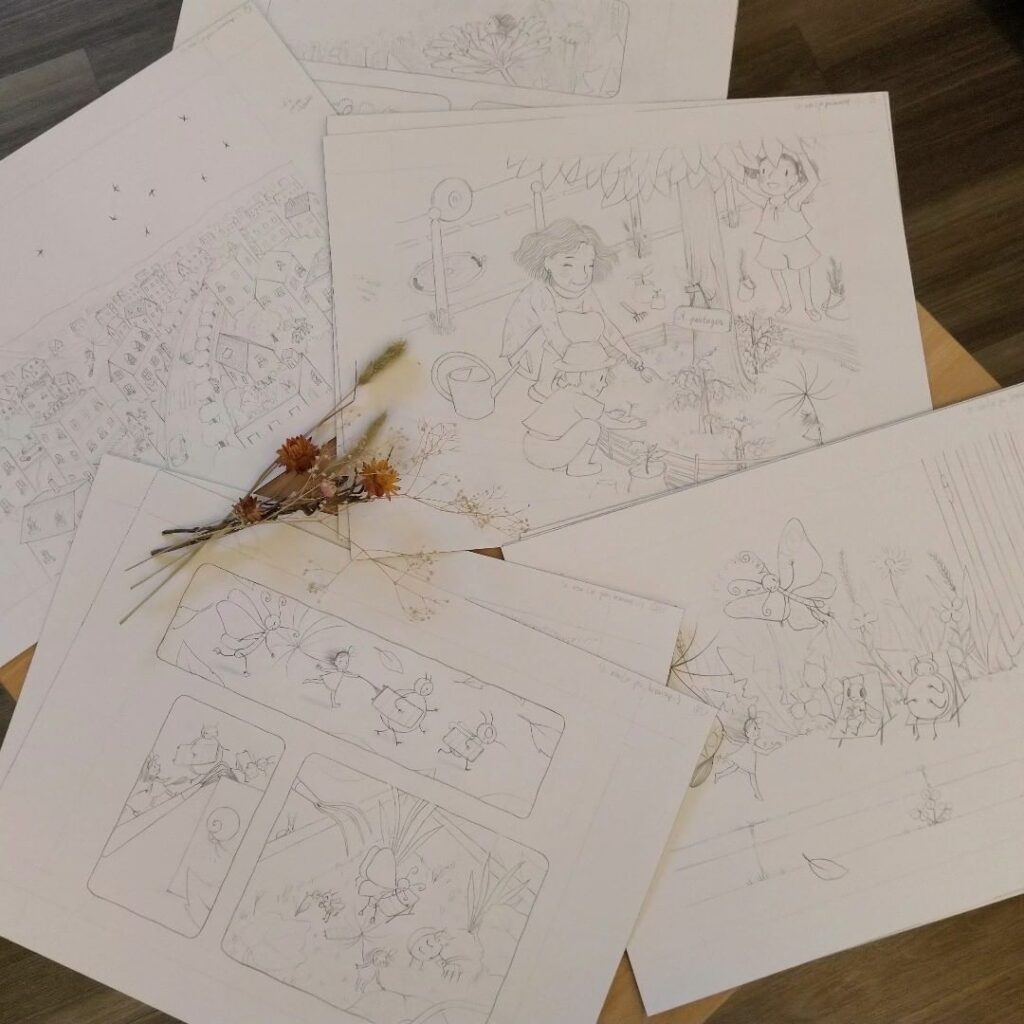
For social networks, I try to devote an hour a day, making effort to be present and communicate with people.
But my schedule remains overall very variable.
An: In your way of planning, would it be drawing that dominates?
Laura: Yes, illustration projects for a publisher, or for my online store, are generally what take the most of my time in the week.
I have also been allowing myself to draw more personal pieces for a while now, and that is important to keep the work-life balance.
An: What about administrative tasks? In my case, I systematically devote one day a week to tasks such as accounting, estimates, invoices, etc., because otherwise I tend to put them off indefinitely.
Laura: I do these papers directly when I make a purchase. Doing so, I do not have a dedicated day, except when I have to make a big price estimate. But that does not happen often because I work a lot with contracts. Those are established beforehand by the publishers.
The happiness of an illustrator
An: What is the best feedback that you ever had since the beginning of your career?
Laura: What makes me most happy is when moms come to me on the social networks to tell me that their child loved the book. It touches me a lot. For me, this is the proof of a successful book.
An: What is your greatest pride in this job?
Laura: When a “complete author” book project is accepted, i.e., where I am both the author and the illustrator, I am very happy.
An: Among the ten books you have released, how many have you published as a complete author?
Laura: Three.
An: Oh, what a dream!
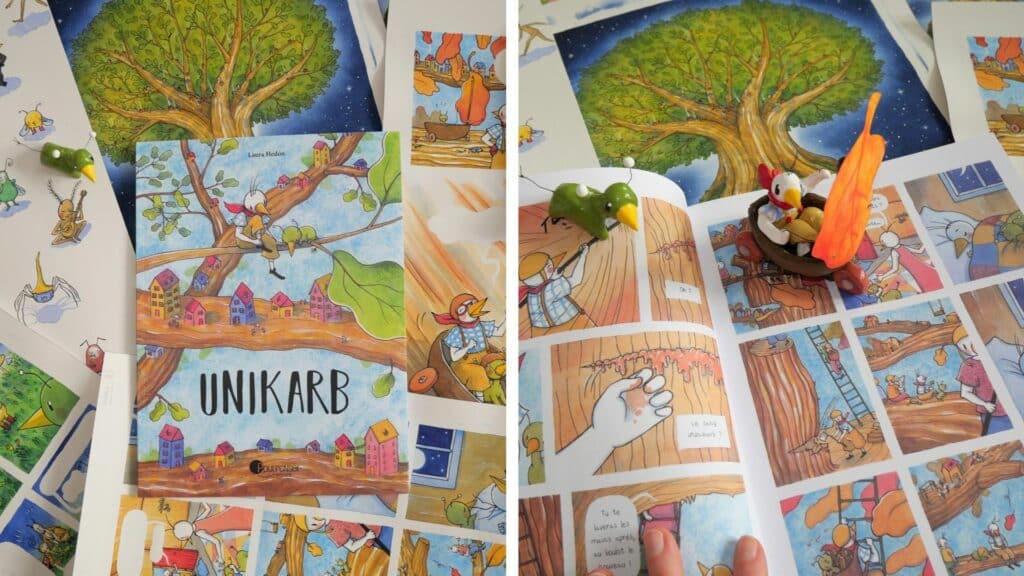
Laura: I feel happy, but having published works as complete author does not mean that success is always guaranteed. Recently, I sent out a project and I have not received any feedback yet.
It is always the same battle that you have to fight with perseverance.
The downside of the profession
The sh*t sandwich
An: Many people think that our job is very glamorous, since we make a living off our passion, and we are free with how to spend our day…
Nevertheless, every profession has its sh*t sandwich, according to the writer Elizabeth Gilbert. It is the hidden side, the constraints, the difficulties that only those who practice the profession are aware of. What is your sh*t sandwich?
Laura: Maybe it is the waiting. You submit, you approach, you are always in doubt. You can wait a very long time before you get any feedback, and sometimes the feedback is negative.
Sometimes, this waiting takes its toll on me psychologically. This job requires to always persevere, to find the strength to bounce back from failures.
An: I find that our self-confidence is always tested, we will face more silence and more rejection than acceptance.
And it is easy to lose self-confidence in this profession of passion, because the aesthetics of an artwork remains a very subjective criteria.
Laura: It is all the more difficult to take a step back from the professional feedback we receive, because each illustration is a part of us, it is our style, it is very personal. Sometimes, you have to be able to detach yourself from your creations in order to not taking the criticism personally.
The “threat” from new technologies
An: Today there are applications that allow you to transform photos into drawings in a few clicks.
Recently, an American won the first prize in the Colorado State Fair art competition with a piece of artwork entirely created with artificial intelligence software.
Do you see all these new elements as a threat to our profession?
Laura: I do not have a lot of experience and hindsight, but I think that these tools have less creativity than we do.
A tool does not have its own universe. A stock image, an image created in one click by an application, or made by an artificial intelligence, has no will behind it. What does it communicate to the viewer?
Meanwhile, a creator, an artist, an illustrator will have his own style and a universe that is unique to him. As long as there is this uniqueness, it should be fine.
The real “threat” for creatives
An: Apart from technological developments, do you have any concerns in our line of work?
Laura: Sometimes, when I mention my pricing for personalized cards or invitations, people think that it is too expensive, even though I do not make big margins on them. Maybe there is a gap (in information) between professional illustrators and consumers.
Some illustrators, especially amateurs, break the market by selling their creations with very low prices. I think that this is a danger because it sends a wrong information to consumers and educate them in a biased way.
Afterwards, in the publishing sector, there is the authors and illustrators’ charter, and other organizations that are trying to valorize the profession and make sure that illustrators are better paid. Improvements have been made, even if it remains difficult.
We are certainly not the richest. But I am still hopeful that the profession will, little by little, be better valued and better recognized.
An: I have the same remark as you. Sometimes, people confuse the price of a printed poster with the price of a customized illustration. Have you had requests for free work, in exchange for visibility?
Laura: Yes, I did. I was able to do that kind of work in the beginning. Often when you are not well-known, you think that it could help you improve, or even take off. But today, I don’t do that anymore.
However, on the children’s authors and illustrators’ groups on Facebook, as soon as an author announces that he has a story to illustrate, many illustrators are ready to jump on the opportunity and accept to do it, for a ridiculous price, or even for free.
I find that sad. And again, it devalues the illustrator’s work.
The “serious subjects” behind the sweet children’s books
When illustrations stand for values
An: You always integrate the values of ecology, nature, and solidarity in your books. Is it your intention to carry the mission of sensitizing the younger generations on these subjects?
Laura I do it without forcing myself, I simply try to talk about what I like.
I do not want to put everything on the shouldersback of the next generation, regarding the problems of today. I just tell myself that if they are more sensitive to all this, maybe the world will get better.
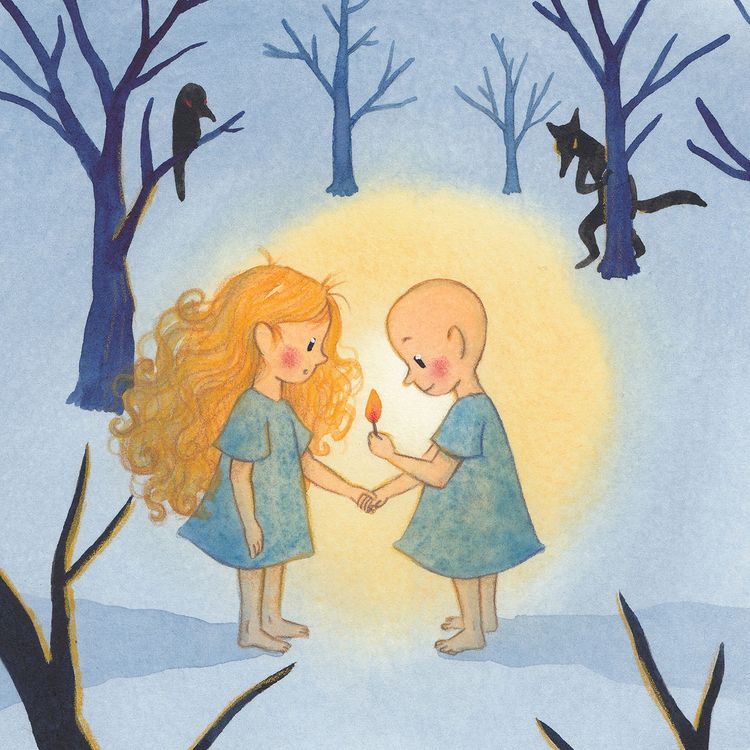
An: Is the representation of diversity (ethnic, morphological, gender…) also a subject requested by your clients?
Laura: There are more and more children’s books that deal with this subject. I try to show this diversity in my books in a natural way. I have never been forced into having to deliver it contractually, but I feel that publishers appreciate when I draw characters of color.
I think that in the United States, the demand is really explicit. It is less common in France until now
An: I find that there is a delicate side to tackling topical issues. It is essential for publishers and brands to not to fall into greenwashing by wanting to promote environmental values.
And it is the same for cultural diversity. We see many ads that show a person of color just to say, “Hey there, we are not racist either!” I think that is clearly not the best way to do it.
Laura: No, it has to be natural, it has to fit to the story, it has to make sense.
I thought your fictional CD cover project was a good example, with the reasoning behind the choice of animals, or the origin of each musical instrument.
I was impressed with all your research! It was very inspiring! It made me want to improve and do more research.
The scientific background in a creative profession
An: I think that our scientific background is a strength for finding references for each project.
Do you think that your scientific background has helped or hampered you in your current job?
Laura: It certainly helped me. Because studying in a scientific field gave me a certain culture, a certain methodology. And for the time being, the stories that I created are really linked to the studies that I did.
At the same time, it was a brake because the whole process became much slower. I did not have a professional network. I did not know the techniques of professional illustration at the beginning. It took me two years to get my first contract. It was very long and hard, both morally and psychologically.
The scientific background gives both advantages and disadvantages.
If I had gone to art school, it would certainly have been much faster, but I would not have had the same story ideas.
An: I think it would also be interesting to review this issue in ten years. Today, we are still very young in the profession. We have a short-term vision of the impact of our university education on our profession.
But maybe we will have a new point of view when we reach a certain maturity in the profession.
Laura: Yes, we have to give it time, because we are always evolving, and it would be funny to see where we will be in ten years!
Being a woman in the world of illustration
An: Some people say that women are favored in the illustration world; others say that illustration is like any other field, and that men rule.
Does being a woman illustrator have an impact on your profession?
Laura: I have never seen being a woman as an obstacle.
The world of children’s illustration is indeed very feminine. I never felt left out, or discriminated against, but I do not really have any hindsight or experience.
I think that illustration is one of those professions where we are mainly valued and judged by the work we provide.
If I had to do it all over again
An: What is the most important thing for you to get started in this business?
Laura: I would say that you have to be well informed.
Coming from a different field, I was a bit lost. If I could do it all over again, I would try to find relevant resources that can guide me right away.
In retrospect, I think that if I had come across a course like Ëlodie’s from the beginning, it would have taken me less time to get started. (Note: the course mentioned is “Illustration, l’Atelier” led by Ëlodie, fashion illustrator. Laura and I were in the same class, and that was how we met). Just to know that you must have a professional website; that you must have a homogeneous and coherent portfolio; that the presence on social networks is important.
An: Do you have any resources to recommend to those who want to start the profession of illustrator?
Laura: Of course. Here are my reference books:
For illustration, there is the book Illustrateur jeunesse, un vrai métier (Children’s illustrator, a real job) by Valerie Belmokhtar. It can give a good overview of what the job is, and how to prepare for it.
To go deeper, there is Lire l’album (Read the picture book) by Sophie van der Linden. This is an analysis of children’s book. The book digs deep to show all the subtleties, the text-image relationships.
There is also Le contrat dont vous êtes le héros: Comment négocier, seul dans la forêt, avec un éditeur (The contract of which you are the hero: How to negotiate, alone in the forest, with a publisher) by Martin page & Gwendoline Raisson.
And for all the pricing matter, I had La Facturation pour les Pros (Invoicing for Professionals) by Lucie Brunellière.
What also helped me to know this profession is to go to fairs and to talk directly with authors and illustrators. Getting concrete feedback from people who are already in the business helped me to move forward.
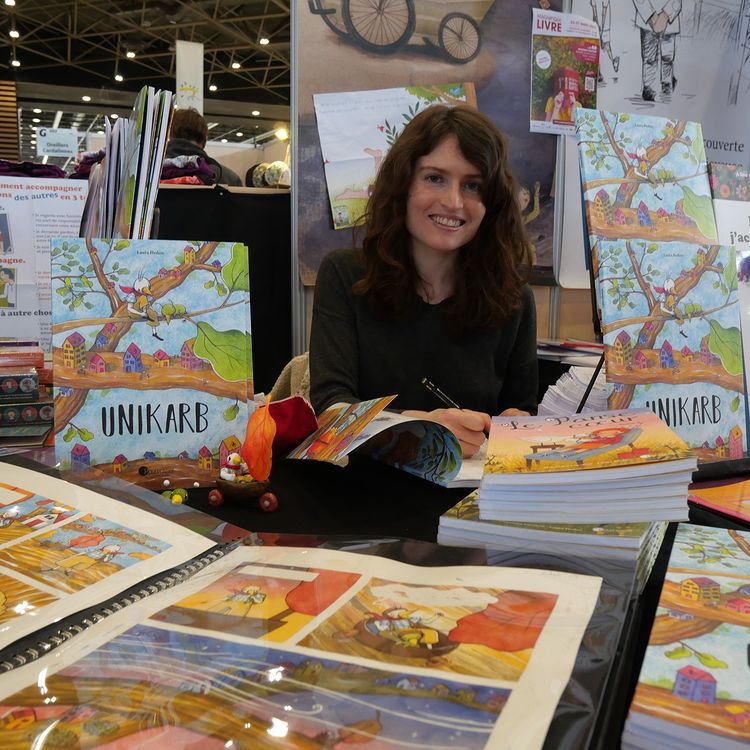
Today’s steps…
An: In your work today, which activity brings you the most income, and which activity brings you the most happiness?
Laura: The big contracts with important publishers are the ones that bring me the most income.
But as it is rather slow, because they are projects over several months, it is good to vary, to take care of the store, to make an illustration for the newspaper… It is the variation / diversity side of the job that I like.
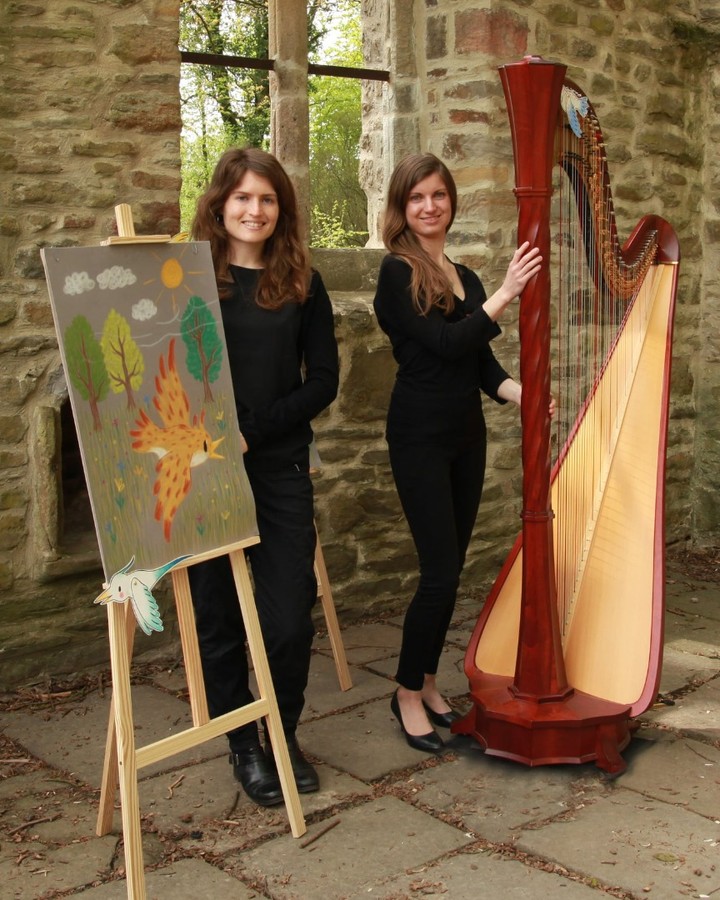
An: What channels do you use to reach customers?
Laura: I contact all publishers by email.
As for individual customers, I try to increase my visibility, talk about my store, promote the services I offer, mostly on Facebook and Instagram.
But I would love to try Pinterest and LinkedIn, especially to share more professional contents. I saw that you share quite a bit on LinkedIn, do you feel like that brings you visibility?
An: At first, I was going to reach out to art directors and publishing houses. But I quickly realized that, apart from following them, I did not dare to talk to them.
I have, however, gotten to know several entrepreneurs. I recently had a client who is also an entrepreneur, so she has a sense of the value of creation and artisanship.
I think that being on the social network can always bring us something, even if it is not the thing we are aiming for at the beginning. Until we try, we cannot know.
Laura: It also builds up over time. I don’t have any direct clients on Instagram yet. Some people asked me for my pricing, but they didn’t follow through.
I tell myself that if we reach them little by little by showing them our works, the day they have an idea for a project, maybe they will think of us more easily.
…and those of the future
An: Do you plan to have an illustrator’s agent?
Laura: I would like to. I only hear good things about it. An agent is someone who will know your rights and defend you. And from what I hear, in general, artists earn more because the agent dares to ask for fees that measure up to your values.
Even though I feel like it is a bit elitist, and it can take years to find a good agent, I would like to try. It could bring good opportunities, even internationally.
An: Are you aiming for an international opening?
Laura: I would love to. It could be nice to vary! In France, in terms of publishing, we are not very well paid compared to other countries, like Germany or the United States…
This is not a target I am aiming at right now, but in the long run, when I have a bit of extra experience, I would like to try.
An: Do you have any projects that you dream of?
Laura: I have several projects in mind for the medium and long term.
I would like to continue to make books, both stories and illustrations, and I would like to make more comics.
An: I hope it will come true! I’m looking forward to it.
To you, the future illustrators, and to your family
An: Do you have any advice for those who dream of becoming an illustrator, and do you have anything to share with their families, in case they are against this choice?
Laura: It is not easy… The key, for me, is perseverance.
You have to give yourself the means to succeed and not wait for it to drop into your hand. It is a job where you have to reach out to others, work hard, have self-confidence to overcome your fears and your blocks.
I would like to tell our friends and family that it is a beautiful profession, that it is important to make beautiful images that make us dream and put a little bit of positiveness in our everyday life. As an illustrator, our mission is also to make the world more beautiful. And I would also tell families that we must have confidence in our loved ones because it is possible to make a living with it!
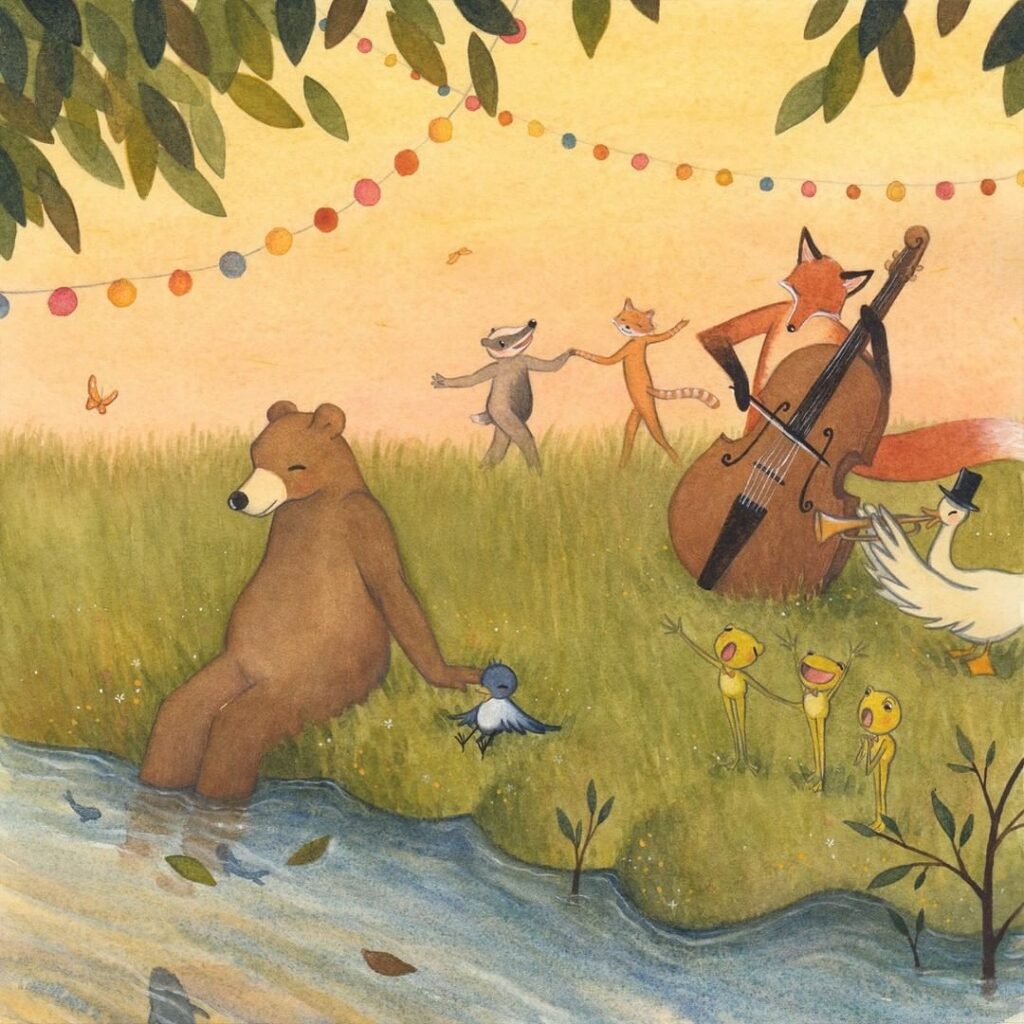
You can find Laura on Instagram laurahedon and on her website laurahedon.com
You can find Laura’s books in bookstores, on the publisher’s website, or on other sites like FNAC, Cultura, Amazon…
If you wish to offer, or acquire beautiful illustrations that give joy and sweetness, please visit to Laura’s store.
Giveaway
For this first special series on the blog, I would like to offer a package with 5 artworks, from each guest of this special series, to one lucky person among you.
If you want to participate in the giveaway, here is the link: https://forms.gle/bh3wtK4mvxAxYpB16
I’m also planning 1 surprise gift for each participant of the giveaway!
Be persistent & Keep creating!
Tu Ha An
*Please consult the information on Copyright & Intellectual Property before copying or mentioning the content and images of tuhaan.com



